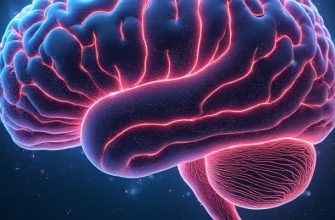
When choosing the best laptop for digital marketing, it’s essential to focus on performance, portability, and display quality. Based on discussions across various forums, particularly Reddit, several models stand out for their suitability to handle the demands of digital marketing tasks like content creation, analytics, and social media management.
Here are key factors to consider when selecting a laptop for digital marketing:
- Processor: A powerful CPU is crucial for multitasking and running marketing software smoothly.
- RAM: At least 16GB of RAM is recommended to ensure seamless performance while running multiple applications.
- Storage: Opt for SSD over HDD for faster data retrieval speeds and better system responsiveness.
- Display: A high-quality display with accurate color representation is key for design and content editing tasks.
According to Reddit users, some of the best laptops for these tasks include:
| Laptop Model | Processor | RAM | Storage | Display |
|---|---|---|---|---|
| MacBook Pro 14-inch | Apple M1 Pro | 16GB | 512GB SSD | Liquid Retina XDR Display |
| Dell XPS 13 | Intel i7 | 16GB | 512GB SSD | InfinityEdge Display |
| Microsoft Surface Laptop 4 | Intel i7 | 16GB | 512GB SSD | PixelSense Touchscreen |
“The MacBook Pro is often praised for its smooth multitasking and top-tier display, making it ideal for content creators and marketers working with high-resolution images and videos.” – Reddit User
- Choosing the Right Processor for Digital Marketing Tasks
- Key Factors to Consider
- Best Processor Choices for Digital Marketing
- Processor Comparison Table
- How Much RAM Do You Really Need for Marketing Software?
- Optimal RAM Sizes for Different Marketing Needs
- RAM Performance Considerations for Marketing Software
- Table: Marketing Software RAM Recommendations
- Best Display Size and Resolution for Multitasking in Digital Marketing
- Recommended Display Sizes and Resolutions for Digital Marketers
- Resolution Considerations
- Display Size vs. Resolution: Key Differences
- Understanding Storage Requirements for Large Marketing Files
- Key Factors to Consider
- Storage Solutions for Digital Marketing
- Storage Requirements Table
- How Graphics Performance Can Impact Your Digital Marketing Tasks
- Key Tasks Benefiting from Better Graphics Performance
- Graphics-Intensive Features for Digital Marketers
- Comparing Graphics Performance in Laptops
- Why Battery Life Matters for Marketing Professionals on the Go
- Key Reasons Battery Life is Essential for Marketing Professionals
- Comparing Battery Life in Popular Laptops
- Comparing Operating Systems: Which One Fits Your Digital Marketing Needs?
- Windows
- macOS
- Linux
- Operating System Comparison Table
Choosing the Right Processor for Digital Marketing Tasks
When selecting a laptop for digital marketing, the processor plays a crucial role in ensuring smooth multitasking and efficient performance. Digital marketing professionals often juggle multiple applications such as SEO tools, content creation software, analytics platforms, and social media management tools. A powerful processor is essential for maintaining productivity without lag or slowdown.
The right CPU helps in performing complex tasks, running virtual machines, video editing, and handling large datasets. Factors such as clock speed, core count, and thermal management should be considered when selecting the best processor for these purposes. The following guide breaks down the important considerations when choosing a processor for digital marketing tasks.
Key Factors to Consider
- Clock Speed: Higher clock speeds result in better performance, particularly for tasks that require quick processing, like video rendering or data analysis.
- Core Count: More cores allow for better multitasking. A quad-core or higher processor is ideal for digital marketing professionals working with multiple apps simultaneously.
- Thermal Efficiency: A processor with good thermal management ensures the laptop doesn’t overheat during extended use, which is crucial during long work sessions.
- Energy Efficiency: For those working remotely or on the go, processors with low power consumption can extend battery life without sacrificing performance.
Best Processor Choices for Digital Marketing
- Intel Core i7: Great for handling intensive marketing tasks like video editing, running complex analytics, and multitasking.
- Intel Core i5: A solid mid-range choice for digital marketers who need reliable performance without the premium price tag.
- AMD Ryzen 7: A strong alternative to Intel, offering great value for multitasking and demanding software, especially in content creation and social media management.
- Apple M1: For those in the Apple ecosystem, the M1 processor delivers impressive efficiency and performance for marketing tasks, especially in the creative space.
Remember that selecting the right processor depends on the specific demands of your digital marketing tasks. If you’re focused on graphic design, video editing, or other resource-heavy activities, opt for a higher-end CPU.
Processor Comparison Table
| Processor | Core Count | Base Clock Speed | Best Use Case |
|---|---|---|---|
| Intel Core i7 | 8 cores | 2.6 GHz | Video editing, data analysis, multitasking |
| Intel Core i5 | 6 cores | 2.4 GHz | General tasks, content creation, light video editing |
| AMD Ryzen 7 | 8 cores | 3.2 GHz | Social media management, multitasking, content creation |
| Apple M1 | 8 cores | 2.4 GHz | Creative work, video editing, marketing content |
How Much RAM Do You Really Need for Marketing Software?
When it comes to choosing the right laptop for digital marketing, one of the key factors to consider is how much RAM you’ll need to run marketing software effectively. RAM plays a critical role in the smooth operation of applications such as content management systems, analytics tools, and design software. The more RAM your laptop has, the better it can handle multiple applications simultaneously, without lagging or crashing.
For digital marketers who use a variety of programs at once, selecting the appropriate amount of RAM can significantly improve efficiency. While you don’t need a super-high-end setup, having enough memory ensures that your system can handle the demands of marketing tasks like email campaigns, social media management, or video editing software. Here’s a breakdown of what you can expect from different RAM capacities.
Optimal RAM Sizes for Different Marketing Needs
- 8GB of RAM: Suitable for light digital marketing tasks such as content creation, social media management, and web browsing. Ideal for those who use a few marketing tools at a time.
- 16GB of RAM: Best for marketers who frequently run multiple applications or work with large files. A common choice for more resource-intensive tasks like running marketing automation tools or analyzing large data sets.
- 32GB of RAM: Recommended for power users who work with complex video editing, high-end design software, or large-scale data analysis. This is ideal for those handling massive marketing campaigns or large amounts of content.
RAM Performance Considerations for Marketing Software
Remember that more RAM doesn’t always guarantee better performance if other components like your CPU or storage aren’t up to the task. It’s important to consider the overall specs of your device when selecting the right amount of memory.
Table: Marketing Software RAM Recommendations
| Marketing Task | Recommended RAM |
|---|---|
| Social Media Management | 8GB |
| Content Creation & Editing | 8GB – 16GB |
| Video Editing & Animation | 16GB – 32GB |
| Data Analysis & Reporting | 16GB – 32GB |
Best Display Size and Resolution for Multitasking in Digital Marketing
Choosing the right display size and resolution is crucial for multitasking efficiency in digital marketing. A larger screen allows for better workflow management, especially when dealing with multiple applications like analytics tools, social media dashboards, and content creation software. The screen size should be large enough to avoid constant window switching, while the resolution ensures that every detail of your work is crisp and clear, reducing eye strain during long working hours.
When considering display size and resolution, it’s important to balance comfort and productivity. A larger screen gives you more space to manage several tasks at once, but an ultra-high resolution is necessary for detailed tasks such as photo editing or data analysis. Below are the most common options available for digital marketers, with their pros and cons for multitasking.
Recommended Display Sizes and Resolutions for Digital Marketers
- 13-inch – Compact and portable, ideal for basic tasks and on-the-go work. However, it may feel cramped for multitasking with multiple windows.
- 15-inch – A great middle ground. Provides enough space for multitasking without being too bulky for travel.
- 17-inch – Best for multitasking with multiple windows open simultaneously. However, it can be less portable and heavier to carry around.
Resolution Considerations
- Full HD (1920×1080) – Suitable for general multitasking and most digital marketing tasks, providing clear visuals for websites, emails, and social media content.
- 4K (3840×2160) – Ideal for those working with high-definition media, detailed graphic design, or video editing. This resolution offers more space for windows, making it easier to handle several applications at once.
- QHD (2560×1440) – A good option for a balance between performance and screen real estate, especially on mid-sized laptops.
Important: A larger display with higher resolution can significantly reduce the need to constantly minimize and resize windows, enhancing workflow efficiency for digital marketing tasks.
Display Size vs. Resolution: Key Differences
| Display Size | Resolution | Ideal for |
|---|---|---|
| 13-inch | Full HD (1920×1080) | Basic tasks and portability |
| 15-inch | QHD (2560×1440) | Balanced multitasking and portability |
| 17-inch | 4K (3840×2160) | Intensive multitasking, media editing |
Understanding Storage Requirements for Large Marketing Files
In the field of digital marketing, managing and storing large media files such as high-resolution images, videos, and large databases is essential. These files are often used for campaigns, social media content, website design, and more. With the growing demand for digital assets, having an adequate storage solution becomes crucial to ensure seamless workflow and quick access to these resources.
Storage capacity can significantly impact the efficiency of digital marketing work. Marketing professionals should be aware of their storage needs based on the size and quantity of files they handle regularly. Below, we’ll explore key considerations for determining storage requirements for large marketing files.
Key Factors to Consider
- File Types – Different file formats (e.g., images, videos, PSD files, etc.) require varying amounts of storage. Videos, especially in 4K resolution, can take up significant space.
- Frequency of Access – Files that need to be accessed frequently should be stored in faster storage solutions like SSDs. For less frequently accessed files, external storage or cloud options may suffice.
- Backup and Redundancy – It’s essential to have backup copies of important files, especially when dealing with campaigns or client projects. Consider cloud backups and external drives to avoid data loss.
Storage Solutions for Digital Marketing
- External Hard Drives – A practical option for additional storage needs, external hard drives can provide significant space for a reasonable price. However, they may not offer the speed and accessibility of internal solutions.
- Solid State Drives (SSDs) – Faster than traditional hard drives, SSDs are an excellent choice for storing files that need to be quickly accessed or edited.
- Cloud Storage – A flexible option for remote access and backup, cloud storage services like Google Drive, Dropbox, or dedicated marketing cloud services allow easy sharing and collaboration.
Important Tip: Always keep at least two copies of critical marketing files: one on-site and one in the cloud for added security.
Storage Requirements Table
| File Type | Average Size | Recommended Storage Solution |
|---|---|---|
| High-Resolution Images (JPEG, PNG) | 5-20 MB | SSD or External Hard Drive |
| Videos (1080p, 4K) | 500 MB – 10 GB | SSD or Cloud Storage |
| PSD Files | 500 MB – 2 GB | SSD or External Hard Drive |
How Graphics Performance Can Impact Your Digital Marketing Tasks
In digital marketing, efficiency and speed are crucial. While most people focus on processing power and memory when selecting a laptop, the graphics performance can also play a significant role. High-quality graphics are especially important when working with visual content, such as video editing, designing marketing assets, or managing complex advertising campaigns. Graphics performance can enhance or hinder your overall workflow, depending on the demands of the tasks at hand.
Understanding how graphics performance affects your daily tasks can help you choose the right laptop for the job. Whether you are creating high-resolution images, editing videos, or running simulations for campaigns, the GPU (Graphics Processing Unit) plays a key role in ensuring smooth operation. Here’s how a strong GPU can improve your digital marketing productivity.
Key Tasks Benefiting from Better Graphics Performance
- Design Work: When creating banners, social media posts, or web graphics, a powerful GPU ensures that rendering happens quickly, without lag.
- Video Editing: Digital marketers frequently use video content in campaigns. A strong GPU helps with smooth playback and faster rendering times.
- Ad Campaign Visualization: Simulating various ad designs or A/B tests can be more fluid with a high-end graphics card.
Graphics-Intensive Features for Digital Marketers
- 3D Rendering: For marketers who use 3D models in ads or product visualizations, having a GPU capable of handling complex renderings is essential.
- Virtual Reality (VR) Content: As VR marketing grows, GPUs that support high-definition VR content become increasingly important for immersive customer experiences.
- Augmented Reality (AR): AR tools used in marketing often require high-end graphics to deliver seamless experiences on websites or mobile apps.
“A powerful GPU doesn’t just improve the speed of your digital marketing tasks; it also enhances the quality and professionalism of the content you’re able to produce.”
Comparing Graphics Performance in Laptops
| Laptop Model | GPU | Recommended Usage |
|---|---|---|
| MacBook Pro 16″ | AMD Radeon Pro 5300M | Video editing, design work, high-performance tasks |
| Dell XPS 15 | NVIDIA GTX 1650 Ti | General digital marketing, moderate video editing |
| Razer Blade 15 | NVIDIA RTX 3070 | Advanced video production, 3D rendering, gaming content |
Why Battery Life Matters for Marketing Professionals on the Go
For digital marketers, the ability to work efficiently from anywhere is crucial. Whether attending meetings, conferences, or traveling, a long-lasting battery ensures they can stay productive throughout the day without interruptions. This is especially important when working with large files, multiple applications, or conducting live social media management tasks, which can drain a laptop’s battery quickly. Choosing a laptop with reliable battery life can make all the difference in maintaining workflow and meeting deadlines.
In a fast-paced digital marketing environment, where every minute counts, marketers often have to juggle between different tools, from content management systems to analytical platforms. Running these programs on the go requires a machine that can keep up without constantly needing to be plugged in. Battery life thus plays a key role in ensuring that work is not interrupted, allowing professionals to focus on delivering results rather than worrying about their device’s power levels.
Key Reasons Battery Life is Essential for Marketing Professionals
- Continuous Work on the Move: When traveling or in meetings, marketing professionals need to work seamlessly without the concern of running out of power.
- Reduced Downtime: Longer battery life minimizes the need for finding power outlets, saving time and effort during busy schedules.
- Improved Productivity: A reliable battery allows for uninterrupted use of marketing tools and platforms, enhancing overall performance.
“Having a battery that lasts all day ensures that marketing professionals stay on top of tasks, whether they’re on-site with clients or moving between meetings.”
Comparing Battery Life in Popular Laptops
| Laptop Model | Battery Life | Key Features |
|---|---|---|
| MacBook Pro 16″ | Up to 21 hours | Powerful processor, large screen, lightweight design |
| Dell XPS 13 | Up to 12 hours | Compact, high-resolution display, portable |
| Lenovo ThinkPad X1 Carbon | Up to 15 hours | Durable build, high performance, excellent keyboard |
- Choose a laptop with a battery life that matches your daily usage: Professionals who travel frequently should prioritize longer battery life.
- Look for fast charging options: Many modern laptops offer quick charging, reducing downtime in case of low battery.
Comparing Operating Systems: Which One Fits Your Digital Marketing Needs?
When choosing a laptop for digital marketing tasks, the operating system plays a crucial role in determining productivity, compatibility, and overall user experience. The major players in the market–Windows, macOS, and Linux–each offer distinct features that cater to different workflows. Whether you are managing social media campaigns, working with analytics tools, or designing digital content, the OS you choose can significantly impact your efficiency and ease of use.
To help you make an informed decision, let’s break down the advantages and limitations of each operating system in the context of digital marketing needs. Consider the type of software you rely on, your preference for user interface, and the flexibility you need for multitasking.
Windows
Windows is the most commonly used operating system for digital marketing due to its compatibility with a wide range of software and devices. It is ideal for marketers who work with high-performance tools, such as SEO platforms, content management systems, and digital advertising tools.
- Pros:
- Extensive software compatibility (Adobe Suite, Microsoft Office, etc.)
- Affordable pricing and a wide range of hardware options
- Great for multitasking with support for multiple windows and applications
- Cons:
- Requires regular maintenance (updates, anti-virus)
- Less intuitive interface compared to macOS
macOS
macOS is favored by many creative professionals, making it a great choice for digital marketing teams focused on content creation. The operating system provides a sleek, intuitive interface and seamless integration with design tools like Adobe Photoshop, Illustrator, and Final Cut Pro.
- Pros:
- Sleek, user-friendly interface
- Excellent performance for design and video editing tools
- High level of security and stability
- Cons:
- Expensive hardware
- Limited compatibility with some marketing software (e.g., certain SEO tools)
Linux
While Linux is less common for digital marketing, it offers unparalleled flexibility and customization. It is suitable for marketers with advanced technical skills who need complete control over their systems or want to run open-source marketing tools.
- Pros:
- Open-source and highly customizable
- Low resource consumption, which can improve performance on older hardware
- High security and privacy features
- Cons:
- Steep learning curve for non-technical users
- Limited support for mainstream marketing software
Important: While Windows and macOS are the primary choices for most digital marketers, Linux may be suitable for those who prioritize customization and control over the operating system.
Operating System Comparison Table
| Feature | Windows | macOS | Linux |
|---|---|---|---|
| Software Compatibility | High | Medium | Low |
| Ease of Use | Medium | High | Low |
| Customization | Low | Low | High |
| Security | Medium | High | High |
| Price | Low | High | Low |








